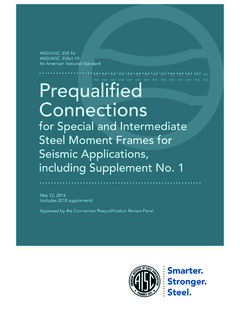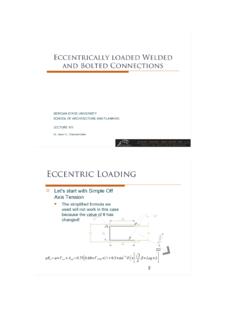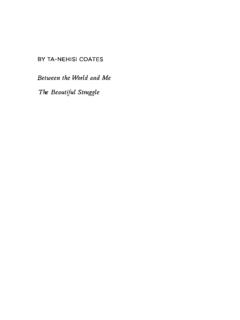Transcription of Cultural Connections Booklet - Child Australia
1 Professional Support CoordinatorCultural Connections BookletThis Cultural Connections Booklet has been created to complement and introduce some of the materials in your Cultural Connections Kit and to help you and your team engage in some of the key topics surrounding respect of diversity and Cultural competency in the early Child hood education and care of us want to ensure that the children and their families, who attend our services, feel welcome, enriched and settled. Because of the rich diversity of our communities, it is important we support children to be able to grow and flourish in a multicultural society.
2 Cultural connection Kits:In your kit you will find a variety of resources, including a mixture of: Puzzles Story books Puppets Dolls Games Musical Instruments Dress ups Cultural Treasure Chest DVD. Resource and Information sheetsHowever, Cultural competency goes far beyond what resources we have in our service. It s about the relationships we make, the way we connect with others and our attitudes. Often when we talk about Cultural competency people often think where to get resources from, how to get Aboriginal people to come and tell stories, do dances, where to go to get puzzles and so on.
3 What is important to stress is that this is secondary (Yorganop) Inside the Booklet you will find a series of practical examples, stories, reflective questions and staff exercises. You will also see ideas on how to use the resources in your kit in a meaningful things that may be useful to bear in mind when using this resource: Culture changes over time and members of different Cultural or ethnic groups will not always think and act in the same way Cultural considerations are relevant to all children, whether or not their Cultural identity is the same as the dominant culture As Cultural competence is a reflection of combinations of what we know, what we want to know and what we can pass on, Cultural competency becomes an integral part of a continuous learning process Cultural competency is a life long journey.
4 Not a destination and it varies from moment to moment and from situation to resource focuses on Cultural diversity in general. Clearly, Aboriginal and Torres Strait Islander people occupy a unique place in our nation as the original custodians. While examples of Aboriginal and Torres Strait Islander experiences have been given, we strongly urge you to access materials and resources written by Indigenous organisations. A list of these can be found in the resource sections of this Connections BookletCultural Connections BookletSelf83448 Environment & ResourcesRelationshipsTable of ContentsIntroduction 4 What is Culture: 5 Cultural Competence 6 Reflections of Diversity through the Curriculum 7 Where do I start?
5 9 How do my biases affect the children I work with? 9 Guiding children to respect diversity: 10 Helpful tips in challenging discriminatory or bias comments from children 11 Johari s Window revealing those blind spots 15 Understanding your own racism and personal prejudice 16 Staff Activity: A Refugee experience 21 Questioning Our Assumptions And Attitudes 23 Staff Activity: Cultural Iceberg 23 Some Key Differences Across Cultures 24 Family composition and parenting 24 Child rearing practices 25 Spirituality, religion and other considerations 27 Food security 28 Celebrations.
6 Entertainment and religious observances 30 Decision making 31 Resources 33 Communicating With Others 35 Extended community involvement 38 First Impressions & Enrolment 39 Working With Families And Children Who Have English As Their Second Language 42 Bilingual language acquisition chart: 42 Tips for when working with ESL Families 44 Using interpreters 46 Resources 47 What is Tokenism 51 Storytelling with children: 54 Using puppets.
7 55 Resources 56 Community resources 58 Definitions 51 Appendix 61 Promoting Cultural & Linguistic Competency Self-Assessment Checklist 61 Footnotes 68 IntroductionCulture is the fundamental building block of identity and is essential for children s sense of being and belonging.
8 (Educators Guide EYLF 2010, 21)Research1 shows that: Children as young as 3 years old and sometimes earlier can show prejudice behaviour and attitudes. Evidence proves that children are affected by the attitudes and behaviours of adults around them. Educating children reduces discrimination and violence in society over the long term. It is at these early stages in their lives, where we as Educators can play a significant role in planting seeds of tolerance, compassion and understanding that will contribute towards the creation of a more harmonious society for the future to come.
9 Respect for diversity and Cultural competency are key aspects of the National Quality Standards (NQS), the Early Years Learning Framework (EYLF) and the Framework for School Aged Care (FSAC). There is also increasing evidence to show that supporting children to follow their Cultural traditions and to participate in Cultural activities enhances their wellbeing and can contribute to their resilience, social confidence and protection from prolonged isolation, emotional trauma or Given that these topics are complex and cover such a vast array of areas, we have chosen to consolidate the research in the field and structure this resource into three key areas.
10 Self Relationships Environment & ResourcesThis symbol highlights how some of the resources in your Cultural connection Kit are relevant to the text. Cultural Connections Booklet4 According to Aboriginal leader Dr. Alf Bamblett culture is to people as water is to fish we take our own culture for granted as it is part of our identity and part of our very being . (Aboriginal Cultural Competence Framework. Copyright State of Victoria 2008, Victoria Aboriginal Child Care Agency 2008).What is Culture: Culture is transmitted through families, language, communities, within generations and from one generation to the next.






